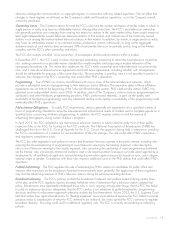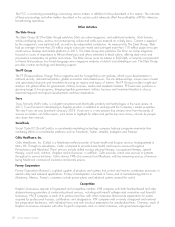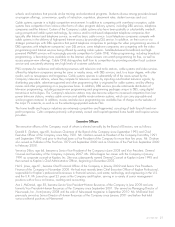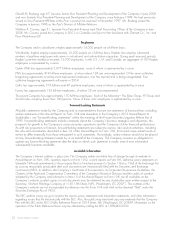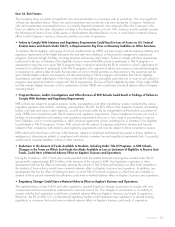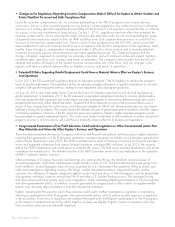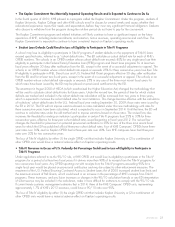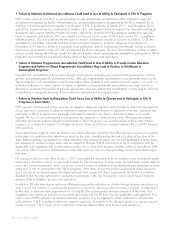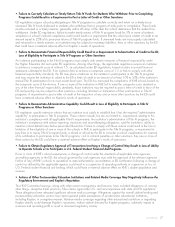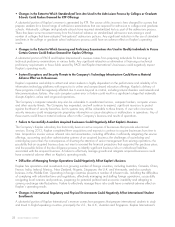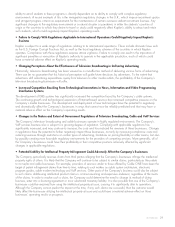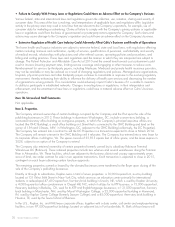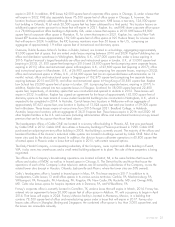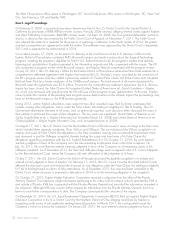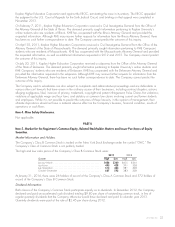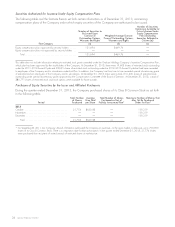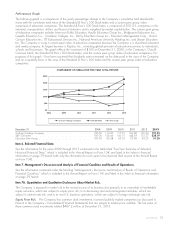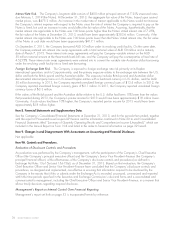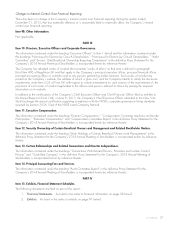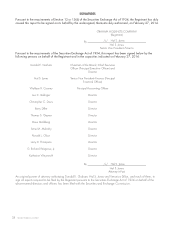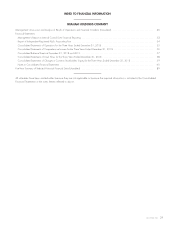Washington Post 2013 Annual Report Download - page 47
Download and view the complete annual report
Please find page 47 of the 2013 Washington Post annual report below. You can navigate through the pages in the report by either clicking on the pages listed below, or by using the keyword search tool below to find specific information within the annual report.ability to enroll students in these programs is directly dependent on its ability to comply with complex regulatory
environments. A recent example of this is the immigration regulatory changes in the U.K., which impose recruitment quotas
and stringent progress criteria as requirements for the maintenance of certain overseas student recruitment licenses. Any
significant changes to the regulatory environment or a natural disaster or pandemic in either the students’ countries of
origin or the countries to which they desire to travel or study could negatively affect Kaplan’s ability to attract and retain
such students, which could negatively impact Kaplan’s operating results.
• Failure to Comply With Regulations Applicable to International Operations Could Negatively Impact Kaplan’s
Business
Kaplan is subject to a wide range of regulations relating to its international operations. These include domestic laws such
as the U.S. Foreign Corrupt Practices Act, as well as the local regulatory schemes of the countries in which Kaplan
operates. Compliance with these regulations requires utmost vigilance. Failure to comply can result in the imposition of
significant penalties or revocation of Kaplan’s authority to operate in the applicable jurisdiction, each of which could
have a material adverse effect on Kaplan’s operating results.
• Changing Perceptions About the Effectiveness of Television Broadcasting in Delivering Advertising
Historically, television broadcasting has been viewed as a cost-effective method of delivering various forms of advertising.
There can be no guarantee that this historical perception will guide future decisions by advertisers. To the extent that
advertisers shift advertising expenditures away from television to other media outlets, the profitability of the Company’s
television broadcasting businesses will suffer.
• Increased Competition Resulting From Technological Innovations in News, Information and Video Programming
Distribution Systems
The development of DBS systems has significantly increased the competition faced by the Company’s cable systems.
The continuing growth and technological expansion of Internet-based services has increased competitive pressure on the
Company’s media businesses. The development and deployment of new technologies have the potential to negatively
and dramatically affect the Company’s businesses in ways that cannot now be reliably predicted and that may have a
material adverse effect on the Company’s operating results.
• Changes in the Nature and Extent of Government Regulations of Television Broadcasting, Cable and VoIP Services
The Company’s television broadcasting and cable businesses operate in highly regulated environments. The Company’s
VoIP services business also is subject to a growing degree of regulation. Complying with applicable regulations has
significantly increased, and may continue to increase, the costs and has reduced the revenues of these businesses. Changes
in regulations have the potential to further negatively impact those businesses, not only by increasing compliance costs and
reducing revenues through restrictions on certain types of advertising, limitations on pricing flexibility or other means, but also
by possibly creating more favorable regulatory environments for the providers of competing services. More generally, all of
the Company’s businesses could have their profitability or their competitive positions adversely affected by significant
changes in applicable regulations.
• Potential Liability for Intellectual Property Infringement Could Adversely Affect the Company’s Businesses
The Company periodically receives claims from third parties alleging that the Company’s businesses infringe the intellectual
property rights of others. It is likely that the Company will continue to be subject to similar claims, particularly as they relate
to its media and cable businesses. For example, providers of services similar to those offered by Cable ONE have been the
target of patent infringement claims from time to time, relating to such matters as cable system architecture, electronic
program guides, cable modem technology and VoIP services. Other parts of the Company’s business could also be subject
to such claims. Addressing intellectual product claims is a time-consuming and expensive endeavor, regardless of the merits
of the claims. In order to resolve such a claim, the Company could determine the need to change its method of doing
business, enter into a licensing agreement or incur substantial monetary liability. It is also possible that one of the Company’s
businesses could be enjoined from using the intellectual property at issue, causing it to significantly alter its operations.
Although the Company cannot predict the impact at this time, if any such claims are successful, then the outcome would
likely affect the businesses utilizing the intellectual property at issue and could have a material adverse effect on those
businesses’ operating results or prospects.
2013 FORM 10-K 29


